No products in the cart.
NEWS
Mastering Beet Cultivation: Your Comprehensive Guide to Growing Healthy, Delicious Beets
Beets are a truly remarkable addition to any garden. These cool-season champions are surprisingly cold-hardy and offer a delightful duality – you can enjoy both their earthy, sweet roots and their nutrient-rich leafy tops. They also bring a splash of color to your plate, from vibrant reds and deep purples to sunny yellows and candy-cane stripes. As a gardening expert with years of experience cultivating a wide variety of produce, including these versatile root vegetables, I’ve found that understanding the nuances of beet care unlocks their full potential. Whether you’re a seasoned grower or just starting your gardening journey, cultivating thriving beets is an achievable and rewarding endeavor. This guide will walk you through everything you need to know, from selecting the best varieties for your needs to ensuring a bountiful harvest and navigating potential challenges.
Choosing the Right Beet Varieties
The world of beets extends far beyond the common deep red globe. Exploring different varieties can add exciting flavors, textures, and colors to your garden and kitchen.
Common and Specialty Beets
Classic red beets, like ‘Detroit Dark Red,’ are reliable producers known for their deep color and sweet flavor. However, don’t overlook others. Golden beets, such as ‘Burpee’s Golden,’ offer a milder flavor and, perhaps most appealingly for some gardeners, they don’t bleed their vibrant pigment onto everything they touch during preparation. Heirloom varieties, like the ancient ‘Crapaudine’ with its unique long, dark root and intense flavor, connect us to gardening history. Sugar beets are grown specifically for sugar production and have large, white roots with a very high sugar content, differing significantly from garden beets. Understanding the purpose and characteristics of different types is key when planning your planting.
 Assortment of colorful beet varieties including red, golden, and striped types
Assortment of colorful beet varieties including red, golden, and striped types
Getting Started: Site Selection and Soil Preparation
Beets perform best in a location that receives at least six hours of sunlight per day, though they can tolerate some partial shade, especially in warmer climates. The key to growing well-formed beet roots lies in the soil. Beets prefer loose, fertile, well-drained soil free from rocks and compacted areas, which can cause roots to become deformed or stunted.
Before planting, prepare the bed by loosening the soil to a depth of at least 8-10 inches. Incorporating organic matter, such as compost or well-rotted manure, is highly beneficial. This improves drainage, aeration, and fertility, providing the ideal environment for root development.
Planting Beets from Seed
Beets are typically grown directly from seed sown in the garden bed. The small, knobby “seed” of a beet is actually a cluster of several seeds, meaning you’ll often get multiple seedlings emerging from one spot. This requires thinning later on.
Sow beet seeds about 1/2 inch deep and 1-2 inches apart in rows spaced 12-18 inches apart. Once the seedlings are a few inches tall, thin them to stand about 3-4 inches apart for optimal root development. The thinned seedlings can often be eaten as baby greens. Timing is important; beets are a cool-season crop and can be planted in early spring as soon as the soil is workable, and again in late summer for a fall harvest.
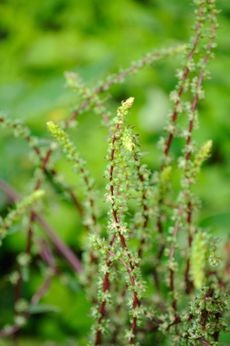 Small beet seedlings emerging from soil after planting seeds
Small beet seedlings emerging from soil after planting seeds
Essential Beet Care: Watering and Fertilizing
Consistent moisture is crucial for growing tender, sweet beets. Uneven watering can lead to tough roots or splitting. Aim to keep the soil consistently moist but not waterlogged. About one inch of water per week, from rain or irrigation, is a good general guideline, but this will vary depending on your climate and soil type. Avoid overhead watering if possible, as wet leaves can encourage fungal diseases.
While fertile soil prepared with organic matter gives beets a great start, supplemental feeding can boost growth, especially in poorer soils. A balanced, all-purpose fertilizer or one slightly higher in phosphorus can encourage good root formation. Apply fertilizer according to product instructions, typically side-dressing plants once or twice during the growing season after thinning. Too much nitrogen can result in lush greens but small roots.
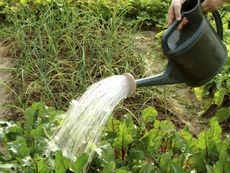 Gardener gently watering young beet plants in a raised garden bed
Gardener gently watering young beet plants in a raised garden bed
Companion Planting for Beets
Strategic planting can help deter pests and improve the health of your beet crop. Good companions for beets include members of the allium family (onions, garlic) which can help repel certain pests. Bush beans, lettuce, and members of the cabbage family (broccoli, cabbage) also make good neighbors. Avoid planting beets near pole beans or members of the carrot family (carrots, parsnips). This practice, rooted in centuries of gardening experience, promotes a healthier garden ecosystem.
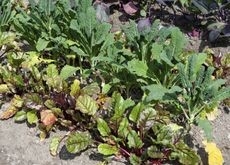 Companion planting demonstration with beets growing alongside compatible herbs and vegetables
Companion planting demonstration with beets growing alongside compatible herbs and vegetables
Understanding Beet Growth: Height and Bolting
Beet plants typically reach a height of about 10-15 inches, primarily from their leafy tops. While the focus is often on the root, the greens are a significant part of the plant’s growth and are equally edible and nutritious.
One phenomenon to watch out for is ‘bolting.’ Bolting occurs when a plant prematurely sends up a flower stalk and sets seed. For beets, this usually happens in response to stress, such as extreme temperature fluctuations (especially warming up too quickly in spring) or drought. Once a beet plant bolts, the root becomes tough and woody. To avoid bolting, ensure consistent watering, plant varieties suited to your climate, and try to plant during cool periods of the season.
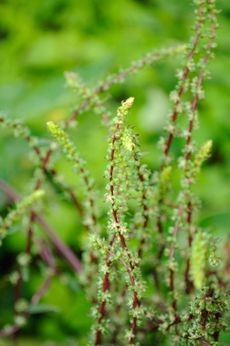 Young beet plants showing healthy vegetative growth before flowering
Young beet plants showing healthy vegetative growth before flowering
Dealing with Pests and Diseases
Even with the best care, beets can sometimes encounter pests and diseases. Recognizing common issues early is key to managing them effectively.
Common Beet Ailments
Fungal diseases like Cercospora leaf spot manifest as small, circular spots with dark borders on the leaves. Powdery mildew appears as a white, powdery coating on leaves and stems. Southern blight can cause wilting and stem lesions near the soil line. These are often exacerbated by humid conditions and poor air circulation. Crop rotation and ensuring proper spacing can help prevent many fungal issues.
Viral diseases like Curly Top virus or Beet Mosaic virus can cause stunted growth, distorted leaves, and reduced yield. These are often spread by insects like leafhoppers. Managing insect populations is the primary control method.
Root-knot nematodes are microscopic soil-dwelling roundworms that cause galls or swellings on the roots, hindering nutrient uptake. Rotating crops, solarizing soil, and planting resistant varieties where available are strategies for managing nematodes.
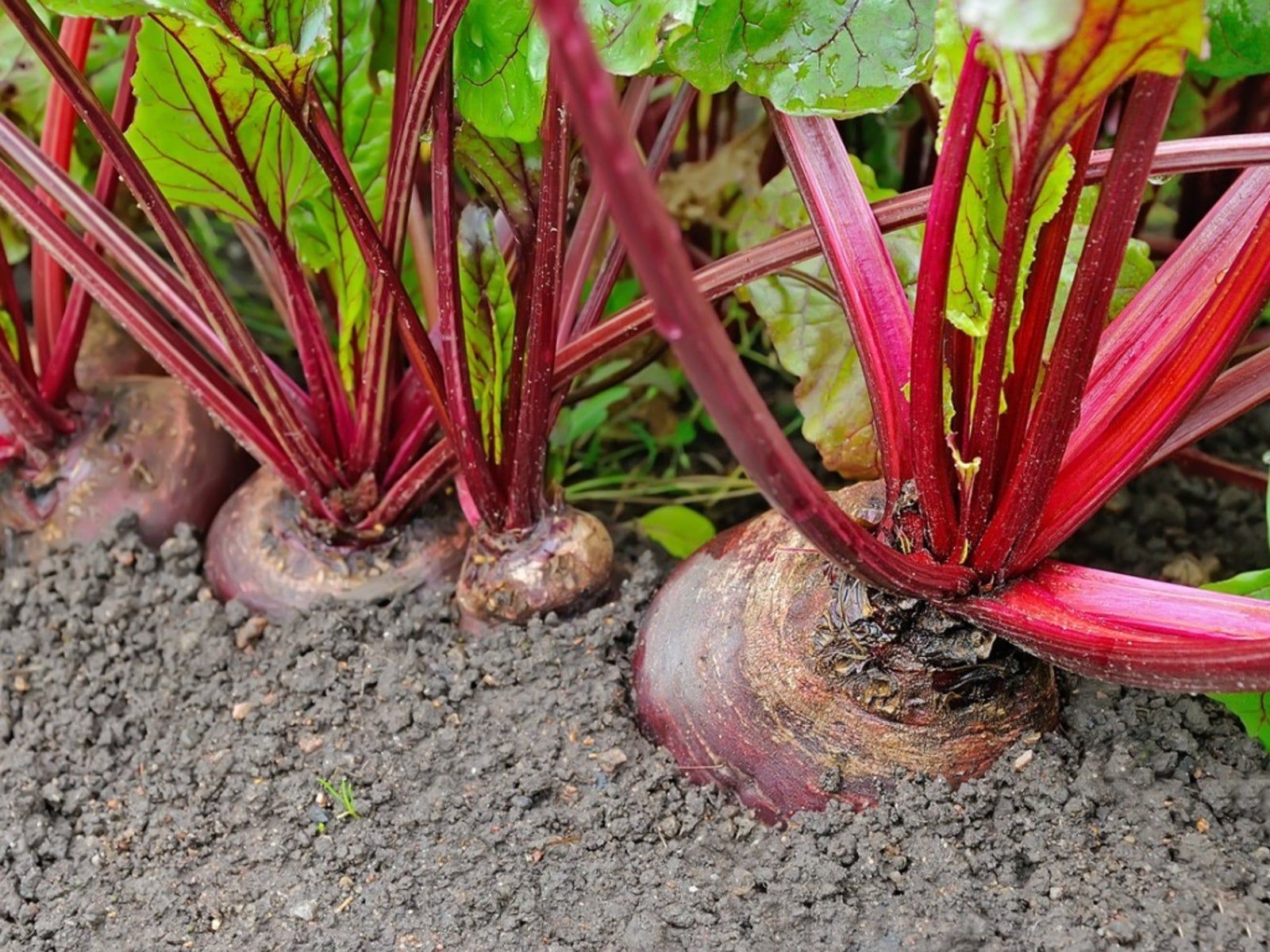 Beet leaves covered in white, powdery growth from powdery mildew fungal infection
Beet leaves covered in white, powdery growth from powdery mildew fungal infection
As experienced gardener Jane Doe notes, “Healthy soil and healthy practices are your first line of defense. Focusing on preventative measures like crop rotation and ensuring good air flow can dramatically reduce disease pressure in your beet patch.” Should you encounter issues, prompt identification allows for targeted, often organic, treatments if necessary.
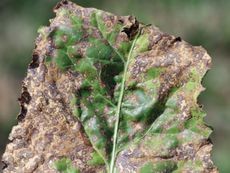 Beet leaf displaying distinctive circular spots indicative of cercospora leaf spot disease
Beet leaf displaying distinctive circular spots indicative of cercospora leaf spot disease
Harvesting Beets
Beets are ready for harvest when the roots reach your desired size, typically 1.5 to 3 inches in diameter, depending on the variety. You can gently feel the shoulder of the beet at the soil line to gauge its size. Don’t wait too long, as overly large beets can become woody. The greens can be harvested at any time once they are large enough to eat, either by taking a few outer leaves from each plant or harvesting the entire top when thinning seedlings. When harvesting roots, loosen the soil around the beet gently with a fork before pulling to avoid damaging the root.
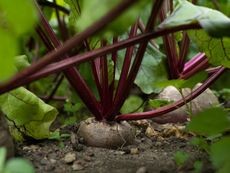 Healthy beet root emerging from the soil in a garden bed
Healthy beet root emerging from the soil in a garden bed
Beyond the Kitchen: Other Uses for Beets
While most gardeners focus on the delicious roots and greens, beets offer some interesting alternative uses. You can easily re-grow beet greens from the tops of harvested beets. Simply place the beet top (the part where the leaves emerge) in a shallow dish of water, ensuring the bottom is submerged. Place it in a sunny window, and new greens will sprout, providing a small, fresh harvest. Beets, particularly red varieties, have also been used for centuries as a natural dye for food and fabric due to their intense pigments.
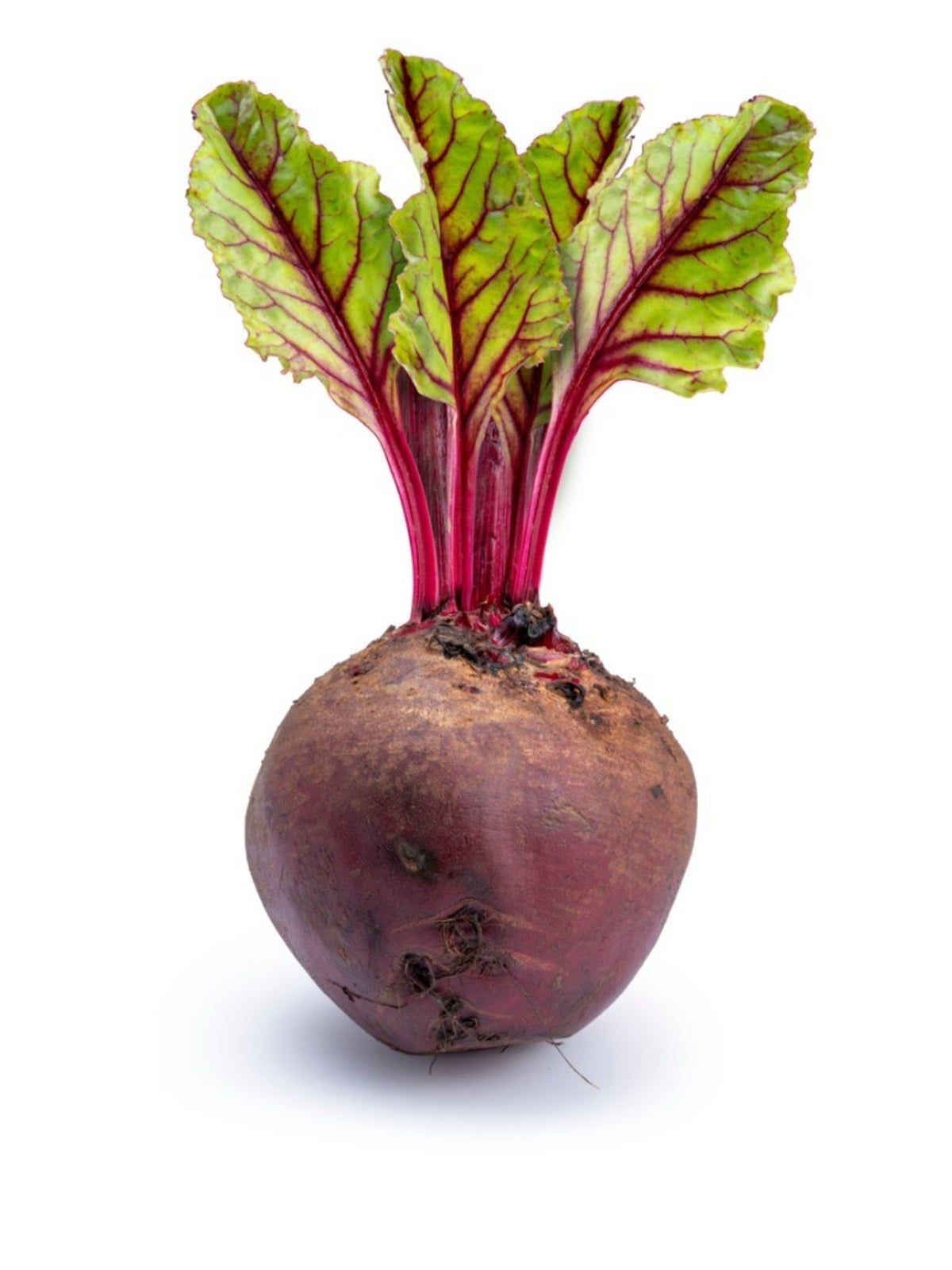 Beet top placed in water, showing new leaf growth for regrowing greens
Beet top placed in water, showing new leaf growth for regrowing greens
Conclusion
Growing beets is a truly rewarding experience, offering both a satisfying gardening process and a versatile harvest for your table. From the initial soil preparation and planting of seeds to nurturing their growth, managing occasional challenges, and finally pulling those colorful roots from the earth, the journey of growing beets is filled with simple pleasures. By following these guidelines for care, selecting suitable varieties, and staying vigilant for potential issues, you can enjoy a bountiful supply of fresh, healthy beets and their greens. Ready to start your own beet patch? Explore the quality seeds and gardening supplies available at Biogarden.asia to support your growing success.
References
- University Extension Horticulture Guides (General principles)
- Agricultural Research Publications on Vegetable Cultivation
- Experienced Gardener Observations (Practical tips and troubleshooting)



